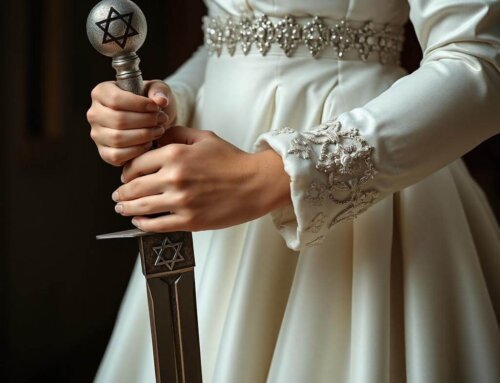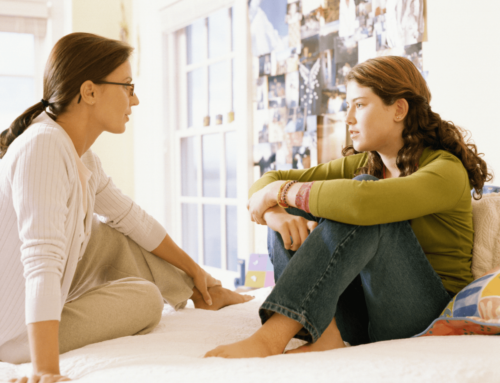 I would like to share a thought that has been on my mind in recent years, which is, that the way that taharat hamishpacha is taught today does not generate a vibrant discourse about taharat hamishpacha, relationships or the mikveh experience – both on the halakhic level and on the conceptual level – which I believe could be achieved by changing our approach to how it is taught.
I would like to share a thought that has been on my mind in recent years, which is, that the way that taharat hamishpacha is taught today does not generate a vibrant discourse about taharat hamishpacha, relationships or the mikveh experience – both on the halakhic level and on the conceptual level – which I believe could be achieved by changing our approach to how it is taught.
In my opinion the way in which the laws of taharat hamishpacha are currently taught in the religious community (and here I’m referring to religious high schools and yeshivot, as opposed to more advanced programs such as yoatzot halacha or in-depth study in midrasha or kallah teacher courses), is unsatisfactory in several ways. The first issue is the timing in which taharat hamishpacha is taught which often does not allow for an in-depth study of these issues. The second issue is the almost exclusive focus on their application, on the practical aspects of observance of the laws of taharat hamishpacha, such that study of the laws is perceived as learning “merely” for the fulfillment of the mitzvah. As a result of these factors, the discussion becomes very narrow. Rather than encouraging a broad understanding of issues for which family purity can serve as a platform; including learning about menstruation, women’s health and fertility, relationships, female sexuality, or the spiritual aspects of a relationship, the discourse stays on the surface level of how it should be put into practice. Moreover, because of the way the laws are taught, the message is conveyed, even if unconsciously, that an unmarried woman has no place in the discussion of this halakhic topic, and is not relevant to the discourse around it.
Let me explain further. If you look around at what happens “on the ground” you’ll see that as a general rule, taharat hamishpacha is learned at two points in life. The first time one encounters and learns the laws of taharat hamishpacha is generally near the end of high school, during a class taught in the twelfth grade. That is, just before the end of 12 years of study. This practice is problematic in a number of ways. First, it is usually a time when most of the female students are busy making important decisions like “what will I do next year”, “army or national service”, and let’s not forget the intense preoccupation surrounding the hachtarah (“coronation” before Purim). Second, towards the end of high school there is a party feeling (asak) and the mental availability to receive from the educational staff is limited, certainly in cases where the female students have a negative predisposition towards the school and the educational staff.
The second time frame when taharat hamishpacha is taught is, naturally, just before marriage, as part of the preparations for the wedding. Here too we will note that this is about learning at a time when the bride is under lots of pressure, and her availability to learn on a deeper level, both halakhically and intellectually, is not fully present, or at least extremely limited.
I’m sure you will agree that this quick review demonstrates how, currently, the timing of learning taharat hamishpacha does not allow for in-depth study, and this connects to the second problem: since there is no time for in-depth study, the learning is very basic and halakhic, with an emphasis on the “bottom line”, and where the focus of the study is “for its implementation” (over le’asiyata), meaning just before marriage. There is so much more that could be expanded on that would enrich the conversation around Judaism’s take on crucial issues of health, intimacy and spirituality, but the inadequacy of the time when family purity is taught does not allow it.
This problem is exacerbated as a result of the growing rate of delayed marriage. Much has been written about older singlehood (which has been given the flattering nickname of the “phenomenon or problem of older singlehood”), on its aspects, its causes, its consequences, the desire and the need to find a solution to the various challenges arising from it. The trend of the rising age of marriage, in my opinion, could be an opportunity to create a new layer in the discourse than exists today around the issues of taharat hamishpacha, relationships and mikveh, both on the halakhic level and on the conceptual level, and create new language and layers of discourse, something that in my opinion is missing.
Today, when the gap between high school graduation and marriage is increasing, there is a significant time gap between learning in high school and learning in preparation for the wedding. As stated earlier, at both of these times the halakhot are taught “under pressure”, and usually in a narrow and specific manner. With the increase in the age of marriage, there is actually a whole community of halakhically observant women who are not part of the halachic discourse on issues of taharat hamishpacha. This reality leads to a situation in which the laws of taharat hamishpacha are “imposed” on many women at a mature age, when, as mentioned, their prior knowledge and learning of the field is often very basic.
This practice intensifies the gap between the personal development of the woman, who usually by this point in time, has had significant experiences in her life, attained an educational degree, and may even hold important positions. However, her halachic and conceptual knowledge about taharat hamishpacha often remains at a low level that does not match her level of accomplishment. In my opinion it is untenable that learning about such important issues stops at the end of high school, only to reappear in the months (or weeks) prior to marriage.
In my eyes, women’s involvement in the discourse is important, both in the halakhic and conceptual fields, and all women should be partners in it regardless of their marital and/or family status. Naturally, after marriage, a new, personal dialogue about observance of the laws of taharat hamishpacha develops, a dialogue between husband and wife. In my view, the dialogue that happens between a husband and wife about these issues should be an added layer, but there is importance in women’s discourse and halakhic study of this area apart from the marital discourse. Unfortunately this hardly exists today, and an array of new challenges arises after marriage that often prevents women from having this deeper discourse amongst themselves once married.
The obvious next question is how could women ignite an in-depth discourse on these topics, when it comes to laws that are intrinsically related to married life? Like many things, to create a change in discourse, you have to go to the source. As mentioned, today the laws of taharat hamishpacha are taught in the twelfth grade, when there is a lot of competing “noise”, and very little availability for a deeper interaction with an area of learning that is both halachic and conceptual.
As a first stage, I would suggest that taharat hamishpacha be taught at a younger age, before twelfth grade, when girls have more time and availability, and are generally more open and receptive to learning from the educational staff. Apart from that, I believe that part of the discourse about building relationships (which has also become more prevalent) should include a discussion about taharat hamishpacha and its different components. The time has come to change our conceptions about taharat hamishpacha education, and to include and empower women in the discussion and study of this issue, and not relegate it to just before marriage.
The laws of taharat hamishpacha carry with them lots of value for all women, and therefore, all women, regardless of their status, should be part of discussion and study of these topics. This will naturally lead to change in perception towards the approach to this topic after marriage as well.








Leave A Comment